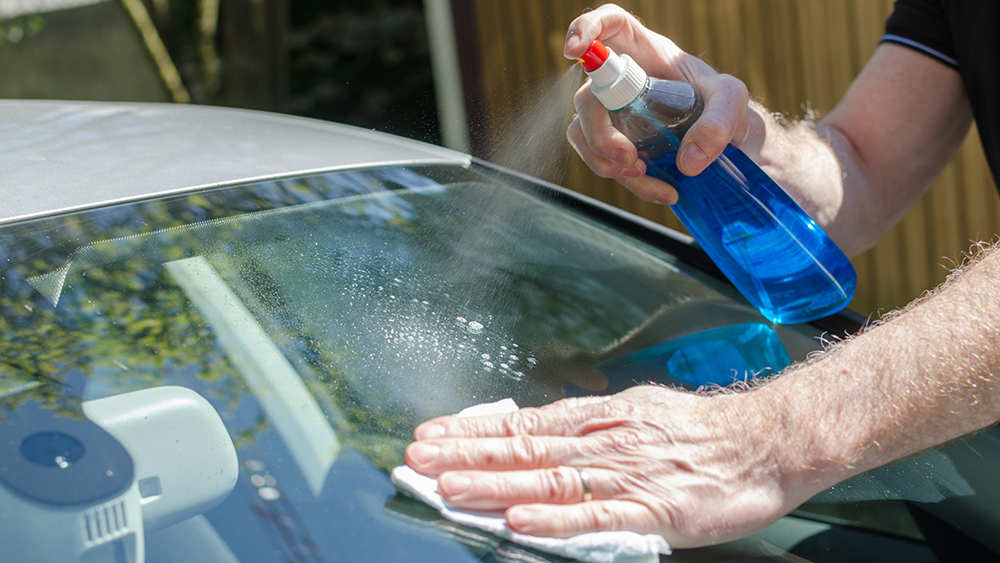Insects a sticky problem? Here's what you can do

They're an annoying, buzzing horde and as much a part of summer driving as the picnic basket. Insects pose a sticky problem for drivers who want to keep their vehicles looking great.
"Bugs are out there looking for mates and it's hard for them to avoid a car going 65 miles per hour," said Mark Hostetler, University of Florida ecologist. "They can create a kaleidoscope on your windshield."
Hosteltler should know. He wrote a traveler's reference to insect identification, "That Gunk on Your Car: A Unique Guide to Insects of North America." The self-proclaimed "splatologist" spent his summers plucking insects off of Greyhound buses and imposing himself on drivers stopping for gas along America's highways.
Insect guts are colorful but problematic, Hostetler said. Left to dry, they harden and become difficult to remove. Acid from insect parts affects paint color and can etch a ghostly image into the vehicle surface—even if the vehicle has a good coat of wax.
"Fats, carbohydrates and proteins found in bug guts create an excellent meal for bacteria," Hostelter said. "The decomposition process increases acidity and potential damage to your vehicle."
Insect fatty tissues act like glue, said Colin Dilley of Prestone Car Care. The longer insects stay on your car, the more difficult they are to remove. Dilley and fellow Prestone researchers collected 4000 windshield samples during a recent two-year study.
"More than one-third of the grime was caused insects," Dilley said. "A small window splat can become a six-inch streak if you don't have windshield washing fluid designed specifically for insect removal. Those smears reduce visibility and driving safety."
According to Ron Fausnight, technical focal point at Rain-X, harsh cleaners can damage vehicle exteriors. Standard car wash products are designed for gentle cleaning but are too mild to dissolve hardened insects.
Fausnight had the following suggestions for keeping your vehicle bug free this summer:
- Fill your window wash tank with fluid or additives designed for bug removal. Many blue window cleaning solutions simply don't break the sticky bonds between insect and vehicle. A quality bug fluid helps remove gooey insect parts and prevent streaking when you use windshield wipers.
- Apply insect prevention barrier. Look for products designed to keep bugs from sticking to vehicle surfaces. It may be applied to "high risk zones" such as the hood, headlights and grille. Make sure the product is intended for auto surfaces and can rinse off easily.
- Spot treat your vehicle once insects have accumulated. Use an insect removal product before washing or waxing. Look for products that contain emulsifiers to dissolve fatty substances and lift insect juice from metal, chrome and rubber surfaces.
- Avoid harsh solvents, detergents or other household cleaners. Some can permanently damage paint and rubber surfaces.
- Always add a good coat of wax after removing insects. Any solutions created for insect removal also tend to strip wax from surfaces. Re-applying wax helps protect your vehicle from accumulating environmental contaminants—dust, grime, sap—that may permanently damage the surface.
- Use the right cleaning tools. Consider a car sponge with soft netting to trap insect parts. Gently wipe the surface and rinse the sponge frequently. Insect parts trapped in the netting act like sandpaper. Avoid household brushes or scrapers that may damage paint.
- Rinse off the radiator thoroughly. Insects accumulate on the radiator and can prevent your vehicle from cooling properly, especially important for summer travel.
"You've got to use something other than soap and water to remove insects," Fausnight said. "A well-designed product is going to be safe for any surface and it's going save you a lot of work."
Article by Jay Alling, editor of Sensible Driver. Write to jay@sensibledriver.com.